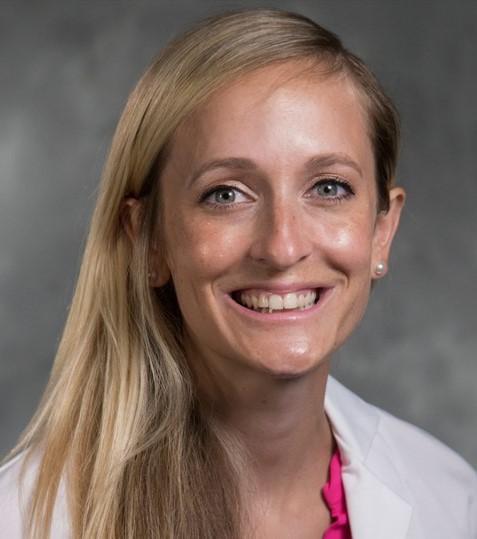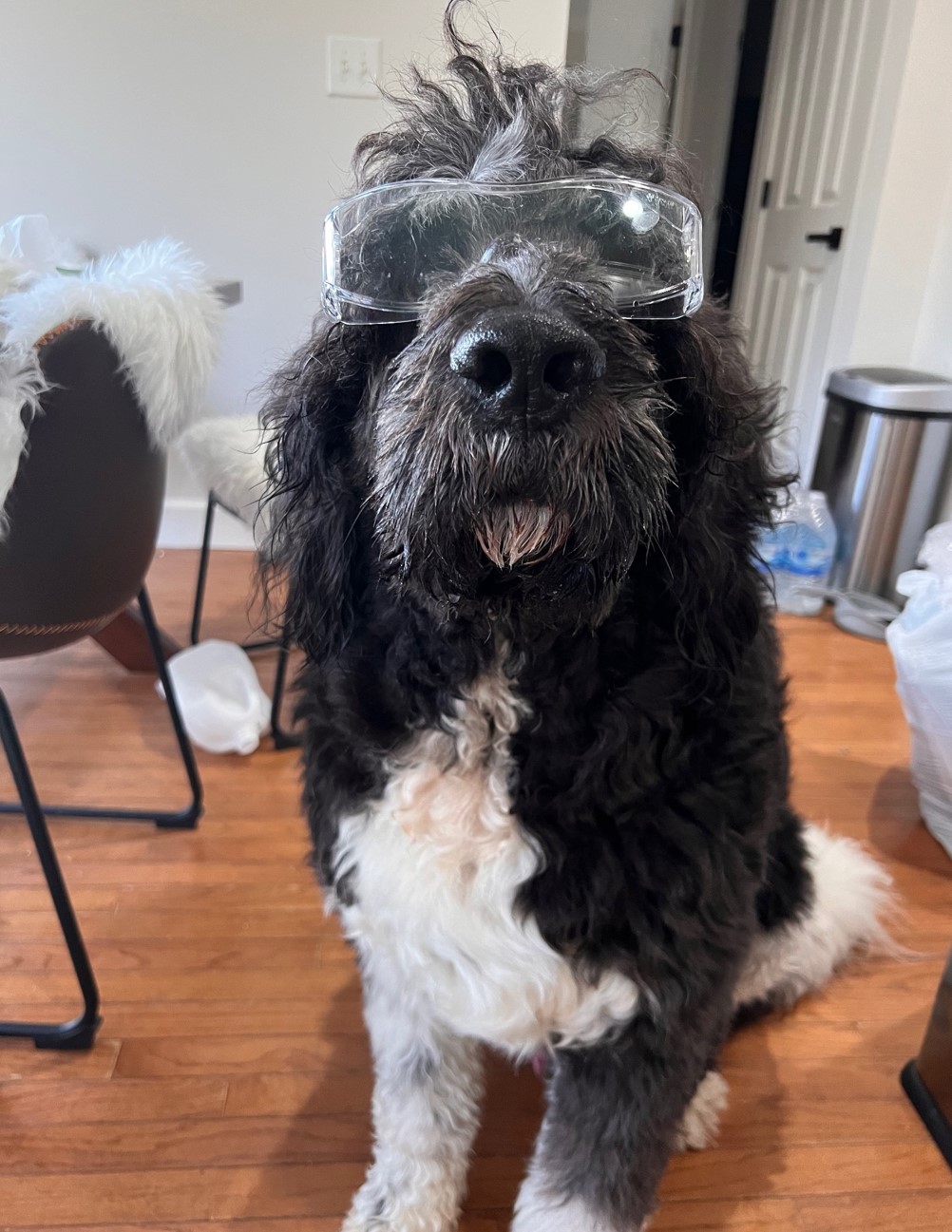
Marjorie Soltis, MD, came to Duke in 2016 as a resident, after her neuroscience class and time working with Parkinson’s patient convinced her to pursue neurology. One residency and fellowship later, Soltis is a sleep medicine specialist and a member of our faculty. For this week’s Spotlight interview, Soltis shares her experience helping patients with sleep disorders and reflects on what she gained from our residency and fellowship programs. She also shares brief take-aways on her recent research, offers a quick tip for people suffering from insomnia, and shares her loves of gardening, raising therapy dogs, and video games when she’s not at Duke.
What are your current responsibilities in the Neurology Department? What does a typical day for you look like?
I currently spend most of my time in the outpatient clinic seeing patients with sleep disorders, when I am not in the clinic I am either reading sleep studies or working with the inpatient consult team.
You graduated from both our Residency Program and our Sleep Medicine Fellowship. What’s one experience or memory from each of those programs that stands out to you?
Some of my favorite residency memories involved the close bond you gain as a PGY-2 with your PGY-4 and vice versa. Supervising residents and being supervised by the chiefs allowed me to form some incredible friendships and memories that will always be incredibly valuable to me.
Night shift can often involve some of the most traumatic, terrifying, and independent moments you have as a resident but also some of the most rewarding. Regarding fellowship, I really enjoyed the independence and delving into critically thinking about very specific components of neurology within sleep medicine. I really feel like I can help people and improve their quality of life significantly in sleep medicine, and my fellowship was an exciting preview of that as well.
You were the first author of a recent review of polysomnography and obstructive sleep apnea in the Journal of Clinical Neurophysiology. What do you see as the most interesting or underappreciated take-away points from that article?
Understanding the changes and advances in electroencephalography and polysomnography was really interesting but also helped me appreciate and understand how and why we perform sleep studies today. Learning about the impact CPAP therapy has on normalizing EEG is fascinating and helps shed light on the importance of quality sleep and how easily we can impact that with simple things like air.
What do you enjoy most about your work?
Seeing patients do well. I have already been fortunate enough to have patients who are completely different people today than they were when we first met, thinking of two in particular. Insomnia and restless leg syndrome are some of the most challenging things to treat but when you have a good outcome, it is an incredible experience and the bond you form with those patients is so rewarding.
I have also always been passionate about palliative medicine, end of life care, and challenging discussions which I often get to share and think about with my rapid eye movement sleep behavior disorder patients, making it one of my favorite conditions to see and manage as well.
What’s the hardest part of your job?
Honestly, as a lot of us know, it has nothing to do with the practice of medicine or my patients, and everything to do with insurance companies, documentation, peer-to-peer reviews, etc. The hardest part of medicine is everything that gets in the way of just being a doctor and helping your patient to the best of your ability. From patients being charged exorbitant amounts of money for something that should be affordable, to hours spent giving case numbers and date of birth and waiting to hope to speak to a physician that wants to help your patients as well.
Every time I have to explain to someone that a home sleep study in no way even similar to a multiple sleep latency test that I need to diagnose and appropriately treat my narcolepsy patient who is unable to work due to excessive daytime sleepiness, I am so disappointed and am reminded why burnout is so prevalent.
What’s one thing you wished more people knew about sleep disorders (or sleep in general)?
If you are awake for more than 15 minutes in your bed when trying to fall asleep, leave the bedroom and read or do something calming until you are drowsy enough to go back to sleep. If everyone could stick with that rule/idea, we would certainly have less people struggling with chronic insomnia. It is arguably one of the most important principles of sleep hygiene and sadly probably the least well-known one.
I think we still have an incredible amount to learn about sleep, but it is clearly one of the most important things for our bodies to be healthy. That being said, anxiety about sleep and the idea of having perfect sleep seems to be increasing which is also going to become a problem since that can end up worsening sleep. We have a slippery slope ahead of us, to say the least, with all of the sleep tracking devices but I am excited about the future of sleep and neurology.
What passions or hobbies do you have outside of Duke?
As a lot of people know by now, I am an avid gamer. I grew up playing Nintendo games on their various consoles and have recently transitioned to more PC gaming. I find it is a nice release after a long day of work, especially when the weather is not beautiful.
That being said, when the weather is nice I love being outside. I recently moved to Efland and live on five acres in a bit of a fixer upper, so working on this land and home have been a really fun new adventure for me. I am currently working on my 96 seed sprouts for my first real vegetable garden this summer (I don’t think my constantly wilting tomato plant in a pot in my backyard these last few summers in Durham count).
Lastly, my newest adventure is my future therapy dog. For my high school senior project, I raised an assistance dog to help patients with medical conditions such as epilepsy. This involved raising a yellow lab/golden retriever mix named Henna for 15 months with an association called Paws with a Cause before ultimately giving her up to be with her person for the rest of her life.
While it was emotionally challenging giving up Henna, it was more than worth it. We later had a goldendoodle named Leia who was a certified therapy dog and would visit our local nursing home’s memory unit (where my grandmother with Alzheimer’s-related dementia was staying) and our local library to be read to by children working on their reading skills.
Seeing the memory patients respond to having an animal back in their lives, even if for a brief period of time, is one of my favorite memories from when we had Leia. I have always hoped to work with dogs to help patients in the future and I finally feel settled enough to achieve this goal. By the time this is published, I will have my golden retriever puppy who will be actively undergoing her therapy dog training with me and hopefully, if all goes well, you will see her around the hospital from time to time.

